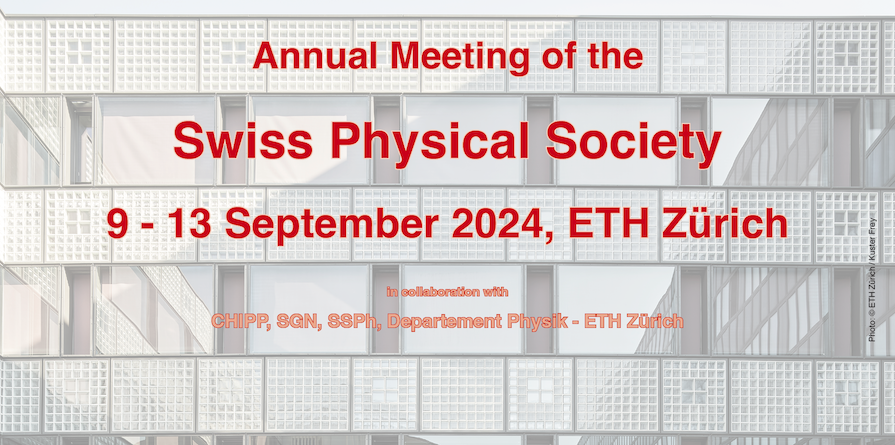Ultralight ($<10^{-10}$ eV/c$^2$) bosons are a broad category of theoretical particles naturally introduced by symmetry-breaking at the Planck scale (such as in quantum-gravity theories). Owing to their low mass, they are predicted to bind to black holes in rotating, hydrogen-like clouds, extract the rotational energy of their host black hole, and then generate continuous, quasi-monochromatic...
The Einstein Telescope, the proposed next-generation European ground-based GW observatory, will dramatically increase our capability to detect GW signals. The number of detections is expected to grow from the current O(1/week) to O(1/minute), which will have a revolutionary impact on both our ability to study the dark universe and on multi-messenger science. In order to fully benefit from this...
The European project for a third-generation gravitational-wave detector -- the Einstein Telescope (ET) -- is currently being developed, and detailed studies have been performed to investigate the science output achievable with different detector configurations. In the context of this study, I will focus on the role of ET in the field of standard siren cosmology, specifically with...
With the remarkable success of the LVK consortium in detecting binary black hole mergers, it has become possible to use the population properties to constrain our understanding of the progenitor stars' evolution. The most striking features of the observed primary black hole mass distributions are the extended tail up to 100 solar masses and an excess of masses at 35 solar masses. In this talk,...
We develop a generally covariant theory of elasticity, using the methods of modern effective field theory, and provide a consistent derivation of the interaction between a gravitational wave (GW) and an elastic body. The field-theoretical results, derived in the transverse-traceless (TT) frame, are valid for all GW frequencies and provide corrections to the already existing results in the...
I present two ways in which anisotropies in the distribution of GW sources may be used for cosmology.
I first demonstrate how next-generation ground-based GW detectors can measure our velocity through the observation of a dipole, providing an independent test of the cosmic kinematic dipole tension and thus of the Universe isotropy. This method combines the observer's velocity effects on event...
The Laser Interferometer Space Antenna (LISA) is a planned space-based observatory to measure gravitational waves in the millihertz frequency band, expected to capture signals from millions of Galactic binaries and tens of merging massive black hole binaries. We introduce a novel, cost-effective global fit pipeline for extracting and characterizing these signals. The pipeline performs a...
One primary source for the future space-based gravitational wave (GW) mission LISA is massive black hole binaries (MBHBs) of 10^4-10^8 solar masses formed mainly due to the merger of galaxies. GWs from an MBHB carry information about the binary’s parameters and also about their environment, which can reveal their formation channels. I focus on gas-assisted MBHB evolution that non-negligibly...
Parameter estimation with full Bayesian inference remains one of the outstanding challenges for the LISA data analysis infraestructure. The current approach requires the development of approximate transfer functions that replicate the TDI response in the Fourier domain, posing a theoretical challenge for complex waveforms.
In this work, we explore the use of waveforms in the time domain. We...
The proposed LISA mission is tasked with detecting and characterizing gravitational waves from various sources in the universe. This endeavor is challenged by transient displacement and acceleration noise artifacts, commonly called glitches. Uncalibrated glitches impact the interferometric measurements and decrease the signal quality of LISA's TDI data used for astrophysical data analysis. The...
One of the major predictions of Einstein’s general relativity is gravitational lensing, the deflection or amplification of light by mass distributions. In my talk, I focus on the phenomenology of gravitational wave lensing in wave optics (long wavelength), as opposed to the standard geometric optics. I show how a supermassive black hole acts as a wave optics lens, in the regime of the LISA...
Current and future gravitational wave detectors provide the possibility to detect gravitational waves emitted by hyperbolic encounters. Such scattering binaries are well captured by the post-Minkowskian (PM) approximation, which has been computed to high orders by employing scattering amplitude methods. In this talk, I will review the relation between scattering amplitudes and the...
In this work we present a data-driven machine learning approach to extract and analyze the progenitor properties of individual gravitational-wave sources. Our method combines the likelihood generated from the gravitational-wave signal and models the posterior distributions to describe the population of stellar binaries and the universe’s star formation by employing a cutting-edge...
It is expected that the data collected from future gravitational wave interferometers such as the Einstein telescope will contain many overlapping signals. Ignoring these overlaps can significantly bias the inferred source parameters of individual signals, such that a joint analysis becomes necessary. We examine the challenges of multi-source parameter inference and discuss potential...
